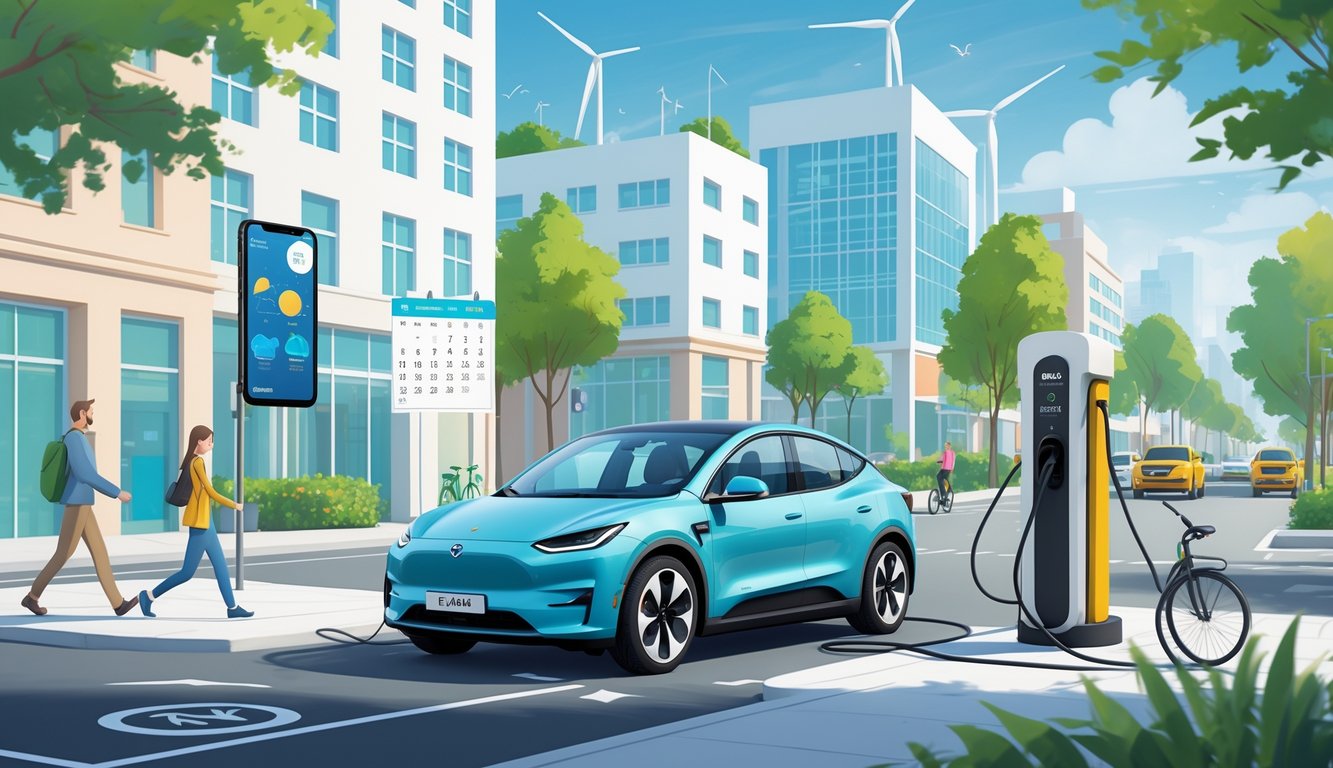
Discovering the Charging Station Landscape
Didn’t expect to start timing grocery trips around kilowatts but here we are. I check maps, tap screens, try to guess if the little lightning bolt icon is a warning or just… there for decoration.
Types of Charging Stations
Total chaos. Level 1? That’s the sad wall outlet in the garage. It’s slow—like, “just leave it overnight and hope” slow. Level 2 is better, shows up at coffee shops, but you’ll finish your latte before your car gets 10%. DC Fast Charging—those chunky cables at rest stops, sometimes with Tesla logos, sometimes with brands I’ve never heard of.
| Level | Power (approx) | Best Use |
|---|---|---|
| Level 1 | 1–2 kW | Overnight at home |
| Level 2 | 7–22 kW | Public lots, work |
| DC Fast | 50–350 kW | Highway, long trips |
“Superchargers” are a Tesla thing. Other chargers call themselves “ultrafast,” which is mostly just marketing. Once found a Level 3 charger next to a weird frog statue behind a hotel. Why? No clue.
How to Locate Charging Stations
Don’t trust the car’s GPS. Ever. Too many apps—PlugShare, ChargePoint, whatever the car came with. None agree. Tesla’s screen says there’s a Supercharger, but you get there and someone’s blocking two spots, not charging, just eating chips.
My quick list:
- PlugShare: Giant map, sometimes in Norwegian, why?
- Tesla Navigation: Tesla-only, kind of smug.
- ChargePoint: Works, but you need an account, and the app hates my Wi-Fi.
Ever wander a city block looking for a green charging post and find a parking meter instead? Some lots hide chargers behind dumpsters. I once stepped in ketchup. Didn’t even get to charge.
Charging Etiquette on the Road
It’s a mess. There are rules, but nobody wrote them down. Don’t hog the charger, but what if your car’s still at 80% and the station slows down? People leave notes (“Call me if you need this spot!”) or, weirdly, a shoe on the windshield. Still no clue what that means.
Leaving your car after it’s done charging is rude—unless you’re in line at the post office, then what? Some Tesla chargers fine you for idling, which feels like the charger’s judging you. Unplugging someone else? Nope, don’t do it, even if that one YouTube guy did. Road trips are wild—people chat about cord lengths and share snacks you immediately regret (pickle chips at 9am, why did I buy those?).
Charging at Home: The New Normal
Nobody warned me my garage would start looking like a science fair project after the EV showed up. Charging just sort of happens, unless I forget and then I’m showering at odd hours waiting for enough juice to get to work. Extension cords everywhere. I keep losing the good one.
Home Charging Setups
First time I tried home charging? Yeah, I ran a cable out the window like some kind of college hack job. Looked ridiculous. Honestly, if you’ve got a driveway or a garage, you can slap a wallbox charger on the wall and just—poof, no more fighting strangers for a plug at the grocery store. Some people just use a regular three-pin plug, which sounds easy until you’re late and realize your neighbor’s cat is doing laps over the cord. Not the future, but it works, I guess.
Street parking? Ugh, that’s a mess. Dragging a cable across the sidewalk just invites angry looks and, if you live near me, those “helpful” safety flyers taped to your door. I tried one of those cable covers at a friend’s house and almost broke my ankle, so, yeah, not for everyone. Sometimes I honestly forget which socket is for the charger and which is for the ancient freezer I keep saying I’ll get rid of. Never do.
Cost and Time Considerations
Overnight charging sounded cheap in my head, especially with those off-peak rates, but then the electric bill landed and I started reading the fine print. Wallbox chargers, sure, they’re fast, but installation? Wallet pain. People keep talking about grants and tax breaks, but honestly, I’d rather pay double at the vet than fill out another rebate form. Bureaucracy is just… why.
Now I’m scheduling my life around time-of-use tariffs. Should I charge the car or make coffee? Why is this even a question? Anyway, here’s how it shakes out for a full battery at home vs. public charging:
| Charging Method | Approximate Cost per kWh | Charge Time* | Hassle Factor** |
|---|---|---|---|
| Standard Home Socket | 28p | 20 hours (full) | 6/10 |
| Wallbox Charger | 25p | 7 hours (full) | 3/10 |
| Rapid Public Charger | 65p+ | <1 hour | 8/10 |
*Assumes ~60 kWh battery.
**10 = maximum hassle; 1 = minimal
One night I actually started laundry at 3am just to match the car charging window. Laundry: wrinkled. Car: charged. Me: zombie. “Smart home,” sure.
